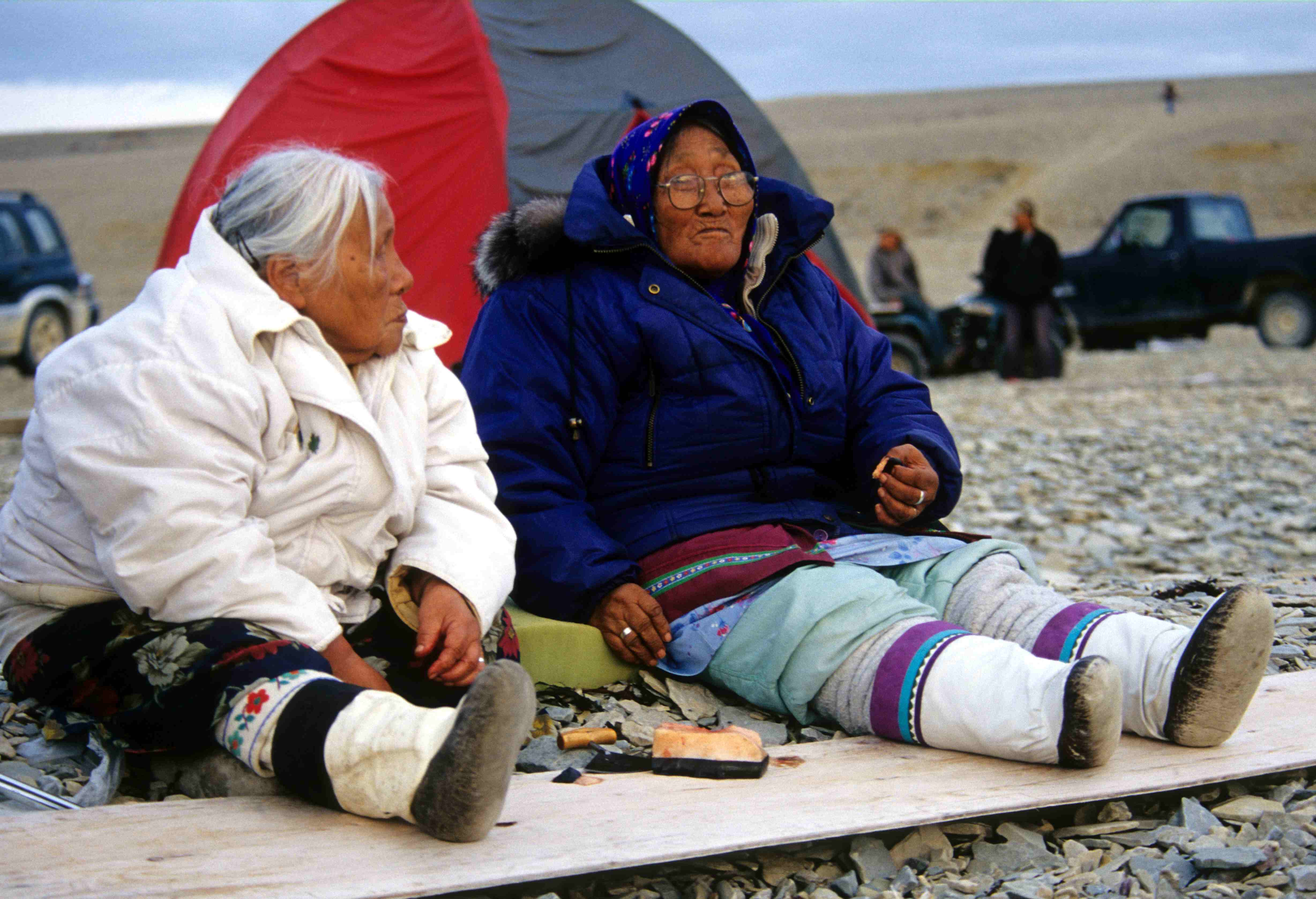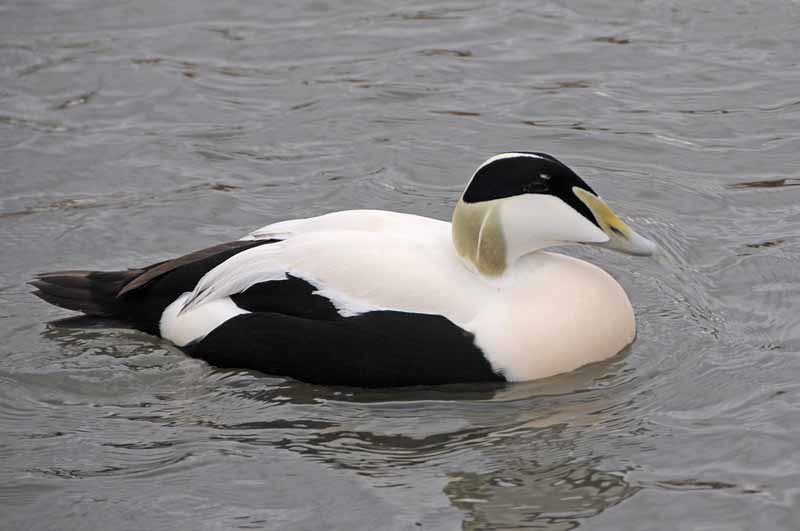|
Kiviaq (food)
Kiviak or kiviaq is a traditional wintertime Inuit food from Greenland that is made of little auks (''Alle alle''), a type of seabird, fermented in a seal skin. Up to 500 whole auks are packed into the seal skin, beaks and feathers included. As much air as possible is removed from the seal skin before it is sewn up and sealed with seal fat, which repels flies. It is then hidden in a heap of stones, with a large rock placed on top to keep the air out. Over the course of three months, the birds ferment, and are then eaten during the Arctic winter, particularly on birthdays and weddings. The process was featured in the third episode of BBC's ''Human Planet'' in 2011. Knud Rasmussen's death is attributed to food poisoning by kiviaq. In August 2013 several people died in Siorapaluk from eating kiviak that was made from eider rather than auk. Eider does not ferment as well as auk, and those who ate it contracted botulism Botulism is a rare and potentially fatal illness caused ... [...More Info...] [...Related Items...] OR: [Wikipedia] [Google] [Baidu] |
Inuit
Inuit (; iu, ᐃᓄᐃᑦ 'the people', singular: Inuk, , dual: Inuuk, ) are a group of culturally similar indigenous peoples inhabiting the Arctic and subarctic regions of Greenland, Labrador, Quebec, Nunavut, the Northwest Territories, and Alaska. Inuit languages are part of the Eskimo–Aleut languages, also known as Inuit-Yupik-Unangan, and also as Eskaleut. Inuit Sign Language is a critically endangered language isolate used in Nunavut. Inuit live throughout most of Northern Canada in the territory of Nunavut, Nunavik in the northern third of Quebec, Nunatsiavut and NunatuKavut in Labrador, and in various parts of the Northwest Territories, particularly around the Arctic Ocean, in the Inuvialuit Settlement Region. With the exception of NunatuKavut, these areas are known, primarily by Inuit Tapiriit Kanatami, as Inuit Nunangat. In Canada, sections 25 and 35 of the Constitution Act of 1982 classify Inuit as a distinctive group of Aboriginal Canadians wh ... [...More Info...] [...Related Items...] OR: [Wikipedia] [Google] [Baidu] |
Siorapaluk
Siorapaluk (West Greenlandic) or Hiurapaluk ( Polar Inuit) is a settlement in the Qaanaaq area of the Avannaata municipality in northern Greenland. It is one of the world's northernmost inhabited settlements, the northernmost settlement inhabited by natives, and the northernmost public settlement in Greenland. It has a population of 43 who speak the Inuktun language of the Polar Inuit as well as the Kalaallisut dialect of Greenlandic. Many of the inhabitants are direct descendants of the last migration of Inuit from Canada in the 20th century. Geography Siorapaluk is located in the northern shore of the Siorapaluup Kangerlua (Robertson Fjord). Hunting There is good hunting in the area of the settlement, and the cliffs around it function as breeding grounds for dovekie (UK English: little auk) ('' Alle alle'') and the thick-billed murre (UK English: Brünnich's guillemot) (''Uria lomvia''). There are many Arctic foxes and Arctic hares in the area and an abundance of seals and walr ... [...More Info...] [...Related Items...] OR: [Wikipedia] [Google] [Baidu] |
Inuit Cuisine
Historically Inuit cuisine, which is taken here to include Greenlandic cuisine, Yup'ik cuisine and Aleut cuisine, consisted of a diet of animal source foods that were fished, hunted, and gathered locally. In the 20th century the Inuit diet began to change and by the 21st century the diet was closer to a Western diet. After hunting, they often honour the animals' spirit by singing songs and performing rituals. Although traditional or country foods still play an important role in the identity of Inuit, much food is purchased from the store, which has led to health problems and food insecurity. According to Edmund Searles in his article "Food and the Making of Modern Inuit Identities", they consume this type of diet because a mostly meat diet is "effective in keeping the body warm, making the body strong, keeping the body fit, and even making that body healthy". Food sources * Hunted meats: ** Sea mammals such as walrus, seal, and whale. Whale meat generally comes from the narwhal, ... [...More Info...] [...Related Items...] OR: [Wikipedia] [Google] [Baidu] |
Greenlandic Cuisine
Greenlandic cuisine is traditionally based on meat from marine mammals, birds, and fish, and normally contains high levels of protein. Since colonization and the arrival of international trade, the cuisine has been increasingly influenced by Danish, British, American and Canadian cuisine."Greenlandic cuisine." ''Official Greenland Tourism Guide.'' (retrieved 30 Oct 2010) During the summer when the weather is milder, meals are often eaten outdoors."Traditional Greenlandic food." ''Official Greenland Tourism Guide.'' (retrieved 30 Oct 2010) National dish The ...[...More Info...] [...Related Items...] OR: [Wikipedia] [Google] [Baidu] |
Meat Dishes
Meat is animal flesh that is eaten as food. Humans have hunted, farmed, and scavenged animals for meat since prehistoric times. The establishment of settlements in the Neolithic Revolution allowed the domestication of animals such as chickens, sheep, rabbits, pigs, and cattle. This eventually led to their use in meat production on an industrial scale in slaughterhouses. Meat is mainly composed of water, protein, and fat. It is edible raw but is normally eaten after it has been cooked and seasoned or processed in a variety of ways. Unprocessed meat will spoil or rot within hours or days as a result of infection with, and decomposition by, bacteria and fungi. Meat is important to the food industry, economies, and cultures around the world. There are nonetheless people who choose to not eat meat (vegetarians) or any animal products (vegans), for reasons such as taste preferences, ethics, environmental concerns, health concerns or religious dietary rules. Terminology The w ... [...More Info...] [...Related Items...] OR: [Wikipedia] [Google] [Baidu] |
Botulism
Botulism is a rare and potentially fatal illness caused by a toxin produced by the bacterium ''Clostridium botulinum''. The disease begins with weakness, blurred vision, feeling tired, and trouble speaking. This may then be followed by weakness of the arms, chest muscles, and legs. Vomiting, swelling of the abdomen, and diarrhea may also occur. The disease does not usually affect consciousness or cause a fever. Botulism can be spread in several ways. The bacterial spores which cause it are common in both soil and water. They produce the botulinum toxin when exposed to low oxygen levels and certain temperatures. Foodborne botulism happens when food containing the toxin is eaten. Infant botulism happens when the bacteria develops in the intestines and releases the toxin. This typically only occurs in children less than six months old, as protective mechanisms develop after that time. Wound botulism is found most often among those who inject street drugs. In this situation, spore ... [...More Info...] [...Related Items...] OR: [Wikipedia] [Google] [Baidu] |
Eider
Eiders () are large seaducks in the genus ''Somateria''. The three extant species all breed in the cooler latitudes of the Northern Hemisphere. The down feathers of eider ducks, and some other ducks and geese, are used to fill pillows and quilts—they have given the name to the type of quilt known as an eiderdown. Taxonomy The genus ''Somateria '' was introduced in 1819 to accommodate the king eider by the English zoologist William Leach in an appendix to John Ross's account of his voyage to look for the Northwest Passage. The name is derived from Ancient Greek : ''sōma'' "body" (stem ''somat-'') and : ''erion'' "wool", referring to eiderdown. Steller's eider (''Polysticta stelleri'') is in a different genus despite its name. Species The genus contains three species. Two undescribed species are known from fossils, one from Middle Oligocene rocks in Kazakhstan and another from the Late Miocene or Early Pliocene The Pliocene ( ; also Pleiocene) is the epoch ... [...More Info...] [...Related Items...] OR: [Wikipedia] [Google] [Baidu] |
Knud Rasmussen
Knud Johan Victor Rasmussen (; 7 June 1879 – 21 December 1933) was a Greenlandic–Danish polar explorer and anthropologist. He has been called the "father of Eskimology" (now often known as Inuit Studies or Greenlandic and Arctic Studies) and was the first European to cross the Northwest Passage via dog sled. He remains well known in Greenland, Denmark and among Canadian Inuit.Elizabeth Cruwys, 2003. Early years Rasmussen was born in Jakobshavn, Greenland, the son of a Danish missionary, the vicar Christian Rasmussen, and an Inuit–Danish mother, Lovise Rasmussen (née Fleischer). He had two siblings. Rasmussen spent his early years in Greenland among the Kalaallit where he learned to speak Kalaallisut, hunt, drive dog sleds and live in harsh Arctic conditions. "My playmates were native Greenlanders; from the earliest boyhood I played and worked with the hunters, so even the hardships of the most strenuous sledge-trips became pleasant routine for me." He was later ed ... [...More Info...] [...Related Items...] OR: [Wikipedia] [Google] [Baidu] |
Greenland
Greenland ( kl, Kalaallit Nunaat, ; da, Grønland, ) is an island country in North America that is part of the Kingdom of Denmark. It is located between the Arctic and Atlantic oceans, east of the Canadian Arctic Archipelago. Greenland is the world's largest island. It is one of three constituent countries that form the Kingdom of Denmark, along with Denmark and the Faroe Islands; the citizens of these countries are all citizens of Denmark and the European Union. Greenland's capital is Nuuk. Though a part of the continent of North America, Greenland has been politically and culturally associated with Europe (specifically Norway and Denmark, the colonial powers) for more than a millennium, beginning in 986.The Fate of Greenland's Vikings , by Dale Mackenzie Brown, ''Archaeological Institute of America'', ... [...More Info...] [...Related Items...] OR: [Wikipedia] [Google] [Baidu] |
Human Planet
''Human Planet'' is an 8-part British television documentary series. It is produced by the BBC with co-production from Discovery and BBC Worldwide. It describes the human species and its relationship with the natural world by showing the remarkable ways humans have adapted to life in every environment on Earth. The show drew attention for alleged fakery and the BBC eventually acknowledged that a number of scenes were inaccurately depicted or misleading and withdrew the series from distribution. ''Human Planet'' was originally screened in the UK on BBC One each Thursday at 8pm over eight weeks, starting from 13 January 2011. Domestic repeats have been seen on Eden, with all 8 episodes aired over one week in April 2012. BBC Worldwide has since announced they have sold the broadcast rights to 22 international markets. Production Announced in 2007, the production teams based at the BBC Natural History Unit in Bristol and BBC Wales spent three years shooting over 70 stories in so ... [...More Info...] [...Related Items...] OR: [Wikipedia] [Google] [Baidu] |
Wedding
A wedding is a ceremony where two people are united in marriage. Wedding traditions and customs vary greatly between cultures, ethnic groups, religions, countries, and social classes. Most wedding ceremonies involve an exchange of marriage vows by a couple, presentation of a gift (offering, rings, symbolic item, flowers, money, dress), and a public proclamation of marriage by an authority figure or Celebrant (Australia), celebrant. Special wedding garments are often worn, and the ceremony is sometimes followed by a wedding reception. Music, poetry, prayers, or readings from religious texts or literature are also commonly incorporated into the ceremony, as well as Wedding superstitions, superstitious customs. Common elements across cultures Some cultures have adopted the traditional Western custom of the white wedding, in which a bride wears a white wedding dress and veil. This tradition was popularized through the marriage of Queen Victoria. Some say Victoria's choice of ... [...More Info...] [...Related Items...] OR: [Wikipedia] [Google] [Baidu] |




